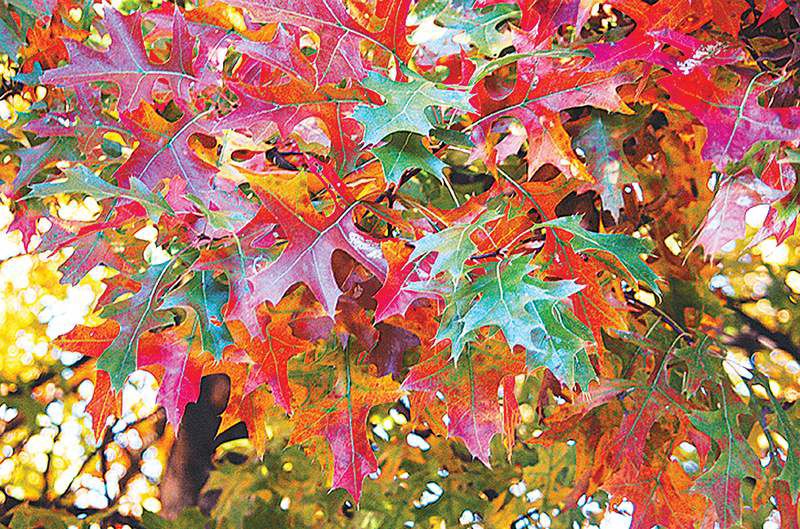Foliage flair: Pick and plan for a colorful fall
Published 5:00 am Tuesday, October 26, 2010

- Depending on soil moisture and protection from the heat, different species of trees and shrubs will peak at different times during fall. Consider your growing conditions, microclimate and day length when selecting trees and shrubs for their fall color.
WASHINGTON — Autumn leaf color can be fickle, especially when trees and shrubs grow beyond their heat and drought tolerances, as may have been the case this year. But, as moisture and cool temperatures return, leaf peepers can enjoy a beautiful autumn. Chlorophyll production in the foliage has begun to slow, and the leaves are finally starting to show some of their other hues.
The green colors are yielding to oranges (carotenes) and yellows (xanthophylls) that are part of the pigment already in the leaf. Reds (anthocyanins) form in fall, and this tendency has been bred into many trees to give them a showier appearance. For example, a seed-grown red maple (Acer rubrum) is a native plant that will not have dependable red fall foliage but will often be a dull yellow. So, plant scientists bred varieties like the October glory red maple.
My preferences are red-to-maroon fall foliage. There are many trees and shrubs that offer these hues from seed-grown stock. Some of my favorites are sweetgum (Liquidambar styraciflua), black gum (Nyssa sylvatica), scarlet oak (Quercusrubra), Virginia sweetspire (Itea virginica), flame azalea (Rhododendroncalendulaceum), trident maple (Acer buergerianum), amur maple (Acer ginnala), sassafras (S.albinum), flameleaf sumac (Rhus copallina) and highbush blueberry (Vacciniumcorymbosum).
Will we have brilliant colors from all these trees and shrubs this fall? I predict that species of trees will peak at different times, depending on soil moisture and their protection from heat. In all probability, the showy reds, oranges, and yellows will not hold for long this season.
Here’s my autumn leaf report, including the showiest and most disappointing trees as well as some colorful shrubs. Use this as a guide to pick your colors of choice if you are selecting plants for your garden for 2011.
Successes
Sweetgums are actually not gum trees; they are members of the witch hazel family. Their long-lasting fall leaves persist into late autumn. The foliage will hold its deep red, maroon leaves almost until winter.
Dawn redwoods and baldcypresses are conifers that wouldn’t be thought of as deciduous trees, but their needles are still turning a beautiful russet-red color.
Red maples that colored red this year were the hybrids. The seed-grown varieties were disappointing this year, as in most years, with brownish-yellow foliage. Generally, you can only count on known hybrids that you purchase at garden centers. Buy your tree now to know what color it will turn in the fall.
Japanese maples are enjoyed for their maroon foliage throughout the entire growing season. The only drawback of those hybrids is that many do not offer a fall color display. The leaves change from red to brown. The species displayed green leaves this summer, and some already turned brilliant pink-to-orange this fall.
Disappointments
Hickories typically change from green to a brilliant yellow that almost makes them glow but they then turn brown rather quickly. This year, they are displaying all leaf colors at the same time and are not very ornamental with the simultaneous mixed green, yellow and brown foliage.
Black gums haven’t provided much of a show this season. They are usually brilliant red throughout fall. My hunch is that many of the black gums were drought-stressed pretty severely by August, which is why they were dropping their leaves as they started to turn red this fall.
Common dogwoods turn a dependable maroon color in autumn, but this year the color change began fairly early. The foliage on most dogwoods wilted by the time they started to change color. By early fall, they were already dropping leaves.
Tulip poplars simply defoliated in September and early October , when their foliage turned a drought-related yellow. Then, during wind and rainstorms, they dropped most of their leaves about a month early, an early leaf loss that was a protective measure against drought.
Microclimate and day length are the greatest factors in the way in which a plant grows. Therefore, your observations might differ from mine depending on exactly where your plants are sited. Take the time to observe these additional characteristics that will add another season of interest to your garden.






